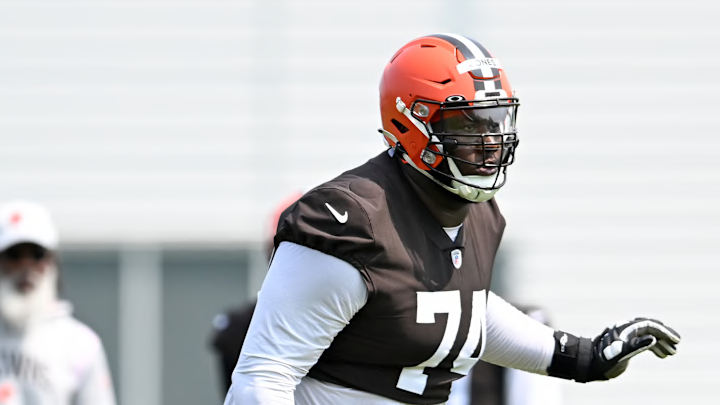The Cleveland Browns can sock it to the rest of the NFL with a massive push from the center of the offensive line with Joel Bitonio, Ethan Pocic, and Wyatt Teller — plus they also have 375-pound tackle Dawand Jones available for spot duty. To top it off, they have cross-trained more than one 300-pound offensive lineman to play fullback.
Nick Chubb is at his best between the tackles, and Deshaun Watson can run the sneak also, averaging 1.95 first downs per game over his career. They have some bad, bad guys available for the Jumbo Formation in 2023.
Dawand Jones was outstanding for Ohio State, yet the Browns seem to be committed to both Jedrick Wills at left tackle and Jack Conklin at right tackle. They've picked up the fifth-year option for Wills, and they also signed Conklin to a multiyear deal.
Wills is somewhat of a gamble in that his play hasn't lived up to expectations at times. Conklin was a Pro Bowler two seasons ago, but a torn right patellar tendon in his right knee had to be rehabbed, causing him to miss a few games to start the season in 2022. Being an extra lineman would seem to be the only job that is available in 2023, and even 2024 would require some sort of roster move.
Cleveland hasn't had a true fullback since letting Andy Janovich go, but they used Drew Forbes, Michael Dunn, and Chris Hubbard as blocking backs in 2022. Hubbard is gone, but Forbes and Dunn are available.
Neither is guaranteed to make the 53-man roster, but even if they do not make the initial roster, they could still be part of the practice squad and thus could see action for up to three games as a temporary promotion. For that matter, other offensive linemen may also be tried out at fullback this summer.
By rule, the offense cannot report two eligible linemen (i.e., players with uniform numbers of 50 and over) for the same play. Thus, if Dawand Jones (74) is going to be your eligible lineman at tight end, Drew Forbes (70) couldn't simultaneously be your blocking fullback.
However, a legal option would be for your fullback candidate of choice to convert to full-time fullback and be assigned a new uniform number. It's possible that the Browns might consider asking a practice squad offensive lineman to change positions.
In that case, then we might see six 300-pound big men at the line of scrimmage (one of whom will be an eligible receiver), and a fat kid at fullback or H-back blocking for Chubb. Jacoby Brissett was great for the Browns as a one-yard wonder fullback playing quarterback in short yardage. The Browns may not want to expose Watson to such harsh treatment, but they might consider dialing up Joshua "Rocket Man" Dobbs to come off the bench just to run the sneak or hand off to Nick Chubb.
So who cares about short yardage? Just another opportunity for Coach Kevin Stefanskiy to make more terrible calls on fourth down that we don't like, right?
Well, maybe not. Investment theory states rather clearly that in today's NFL, a good passing team usually produces more average yards per play through the air than by ground. The Browns produced 4.7 yards per rushing attempt; 5.9 yards per pass attempt.
For context, the Chiefs averaged 7.5 yards per pass attempt and the Bears averaged 5.4 yards per rushing attempt to lead the NFL in those categories. However, if your team can dominate short yardage, that translates to extra first downs and touchdowns.
Those are the "tough yards" people talk about, especially from back in the day. Jim Brown or Leroy Kelly used to get the call at crunch time. Sometimes when it was first-and-goal from the three, they just needed to move the pile forward three straight times, and the yards-per-carry average may not have looked all that great in the box score.
But if you had actually seen the game, the story might be entirely different. Short yardage is still the foundation of the running game, and the big stuff follows from that.
